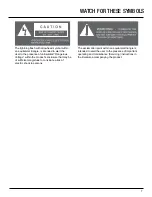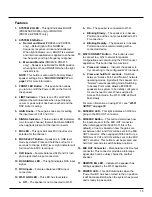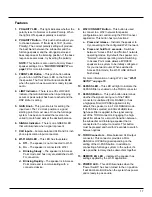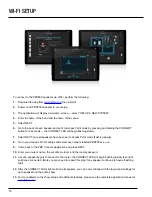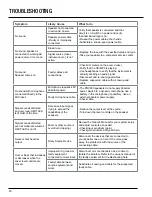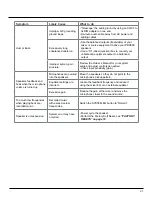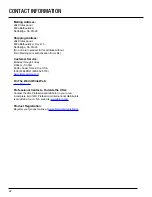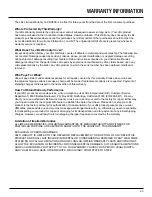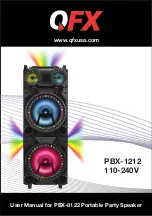
20
Symptom
Likely Cause
What to do
No sound.
Speaker not connected
to active AC power.
Verify that speaker is connected and that
circuit is on. Switch on power and verify
that illuminated logo is on.
• Re-seat the power cable at both ends.
• Substitute a known-good power cable.
Speaker power cable
is faulty or improperly
connected.
No sound, speaker is
connected to working AC
power but won’t come on.
Blown fuse.
• Replace the fuse with the specified value and type.
• Take your speaker to a competent service center.
Signal source (mixer,
instrument, etc.) is not
active.
No sound.
Speaker comes on.
Faulty cables and
connections.
• Check VU meters on the source mixer.
• Verify that the CD/MP3 is playing.
• Use headphones to verify that the instrument is
actually sending an audio signal.
• Disconnect and re-seat signal cables.
• Replace suspected cable with a known-good
cable.
No sound with microphone
connected directly to the
MIC input.
Microphone requires 48V
phantom power.
• The PRX800 speakers do not supply phantom
power. Switch to a dynamic microphone, use a
battery in the microphone (if possible), use an
external phantom power supply.
• Check cable.
Faulty microphone cable.
Signal sounds distorted
and very loud, LIMIT LED
is lit most of the time.
Excessive input signal,
trying to exceed the
capabilities of the
speakers.
• Reduce the output level of the source.
• Turn down the level controls on the speaker.
Signal sounds distorted
even at moderate volumes,
LIMIT LED is not lit.
Mixer or other source is
overdriven (clipping).
Review the Owner’s Manual for your system setup
and adjust controls as needed.
• Check input sensitivity (gain).
• Check gain structure of signal chain.
Noise or hiss heard at
output.
Noisy Source Device.
Disconnect the devices that are connected to
your speaker one at a time. If the noise goes
away, the problem is with the source or the
connecting cable.
Hum or Buzz that increases
or decreases when the
mixer level controls are
moved.
Improper A/C ground or
faulty equipment
connected to mixer input.
Disconnect or mute channels one at a time to
isolate the problem. Refer to the owner’s manual of
the faulty equipment for troubleshooting help.
Faulty cable between
source equipment and
mixer.
Substitute a known-good cable for the suspected
faulty cable.
TROUBLESHOOTING


